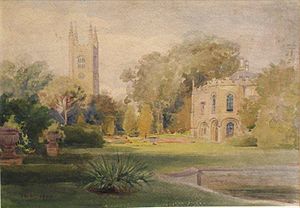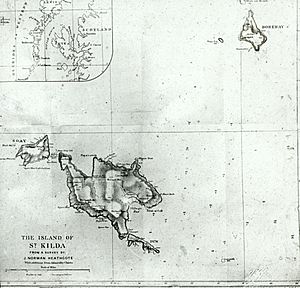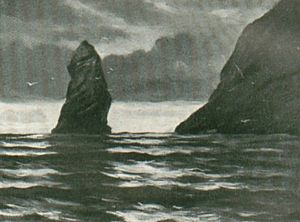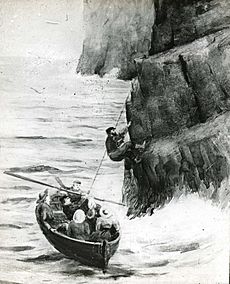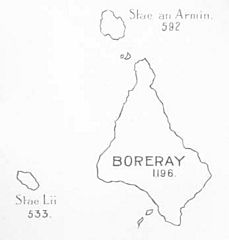Norman Heathcote facts for kids
John Norman Heathcote (born June 21, 1863 – died July 16, 1946) was a British writer, artist, and photographer. He is best known for his book St Kilda, published in 1900. This book was all about the amazing Scottish islands called St Kilda.
Contents
About Norman Heathcote
Norman Heathcote was born in 1863. He was the second child and first son of John Moyer Heathcote and Louisa Cecilia MacLeod. His father was a lawyer and a very good amateur player of a game called real tennis. His mother was from a famous Scottish family, the Macleods.
As a child, Norman lived in different places like London and Brighton. He also spent time at a large country house called Conington Castle. He went to famous schools, Eton College and then Trinity College, Cambridge. He finished his studies in 1885.
Later in life, Norman became a Justice of the Peace in 1906. This meant he helped with local law and order. He also served as the High Sheriff of Huntingdonshire in 1917 and 1918. When his father passed away in 1912, Norman inherited Conington Castle. He lived there for many years. He also owned a steam yacht called Ketch in 1933.
His Book: St Kilda
In 1898 and again in 1899, Norman Heathcote visited the remote St Kilda islands with his sister, Evelyn. At that time, his uncle, Reginald MacLeod, owned St Kilda. Norman was so fascinated by the islands that he decided to write a book about them.
His book, titled St Kilda, was published in London in 1900. It was so popular that it was reprinted in 1985. The book was special because it included eighty of his own pictures. These were photographs he took with a handheld camera, along with his sketches, paintings, and a map. He was the first person to record several types of birds living on the islands.
The book shares stories about the people of St Kilda, their history, and their unique way of life. It also describes the amazing wildlife, especially the birds. Norman also wrote about the adventures he and his sister had, like boating and climbing with the local St Kildans.
Visiting St Kilda
In 1898, Norman and Evelyn traveled to St Kilda on a steamer ship called SS Dunara Castle. The journey took four hours. They stayed for ten days. These ships visited the islands only during the three summer months, about twice a month.
There were about twenty visitors on the island during their visit. Some were tourists, but others were there to help build a new schoolhouse. Before this, lessons were held in the church. Evelyn even helped by laying the first stone for the new school. By their next visit in 1899, the school was finished, and the church had been completely fixed up.
About seventy people lived on St Kilda at that time. Most of them spoke only Scottish Gaelic. However, the children were learning English at the new school.
Climbing Adventures
In 1899, Norman and Evelyn stayed for two months. In July, they took a boat to Boreray, another island in the group. From there, they climbed a tall, thin rock pillar called a sea stack named Stac Lee. Norman wrote that climbing Stac Lee was "not difficult." He even mentioned that two other women had reached the top before Evelyn.
After exploring Boreray, they started rowing back to the main island, Hirta. But the weather got very bad. They had to spend the night in their boat, finding shelter in a sea cave on Boreray.
When Norman visited another stack called Stac Levenish, he was told he was the first person who wasn't a St Kildan to ever go there. He couldn't get back into his boat from one side. So, he had to climb the stack and then go down the other side where the water was calmer for the boat. He thought the hardest stack to climb was Stac Biorach. He said only one other non-St Kildan, Richard Manliffe Barrington, had ever climbed it.
Writing About His Journeys
Norman also wrote articles for journals. In 1900, he published "A Map of St Kilda" in the Geographical Journal. In this article, he explained how he made the map that was included in his St Kilda book. It was very hard to map the coast because the cliffs were so steep. He couldn't even get his special measuring tool, a theodolite, onto some of the islands like Soay and Boreray.
A year later, he wrote "Climbing in St Kilda" for the Scottish Mountaineering Club Journal. Here, he shared more about his climbing adventures. He said getting onto Stac Lee was "a most appalling undertaking." It involved jumping from the boat and climbing a slippery cliff covered in seaweed. He even suggested taking off boots and climbing in socks!
- SMCJ (1901) maps of St Kilda (not to same scale)



